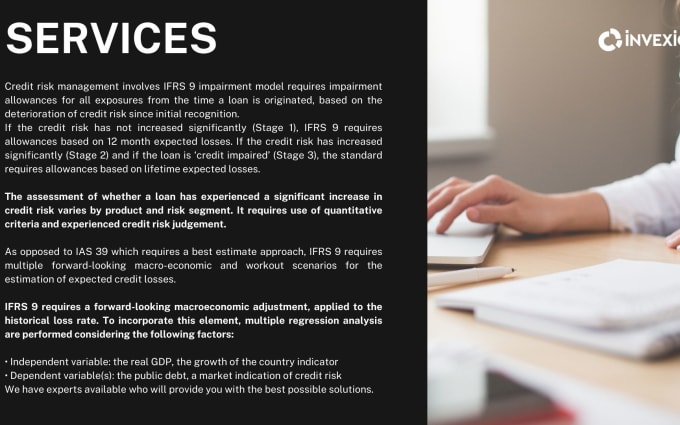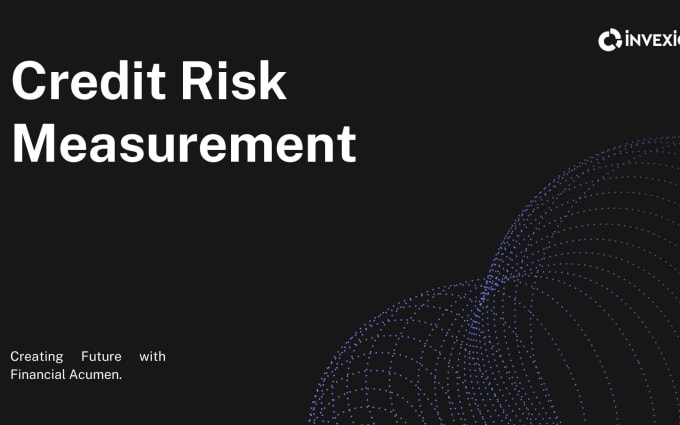Credit Risk Management
Description
Credit risk management involves IFRS 9 impairment model requires impairment allowances for all exposures from the time a loan is originated, based on the deterioration of credit risk since initial recognition.
If the credit risk has not increased significantly (Stage 1), IFRS 9 requires allowances based on 12 month expected losses. If the credit risk has increased significantly (Stage 2) and if the loan is ‘credit impaired’ (Stage 3), the standard requires allowances based on lifetime expected losses.
The assessment of whether a loan has experienced a significant increase in credit risk varies by product and risk segment. It requires use of quantitative criteria and experienced credit risk judgement.
As opposed to IAS 39 which requires a best estimate approach, IFRS 9 requires multiple forward-looking macro-economic and workout scenarios for the estimation of expected credit losses.
” IFRS 9 requires a forward-looking macroeconomic adjustment, applied to the historical loss rate. To incorporate this element, multiple regression analysis are performed considering the following factors:
• Independent variable: the real GDP, the growth of the country indicator
• Dependent variable(s): the public debt, a market indication of credit risk
We have experts available who will provide you with the best possible solution.
What will you get?
Spreadsheet




